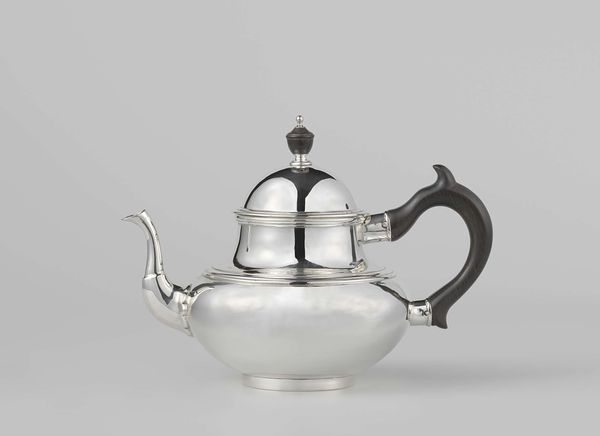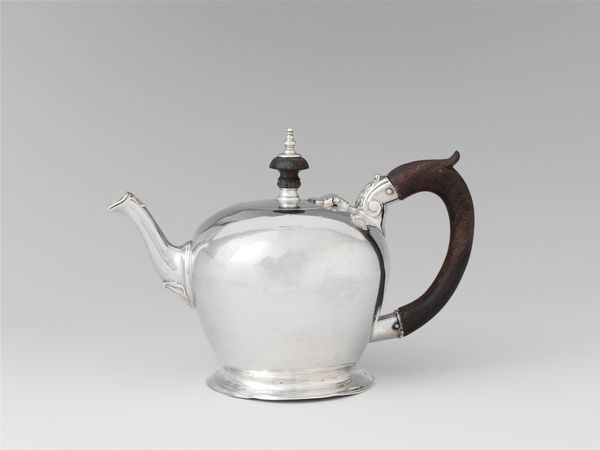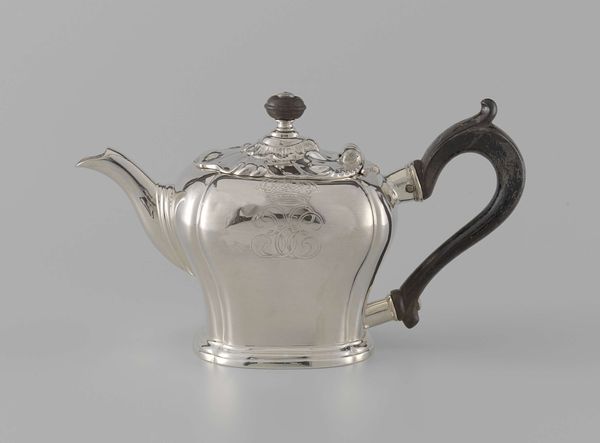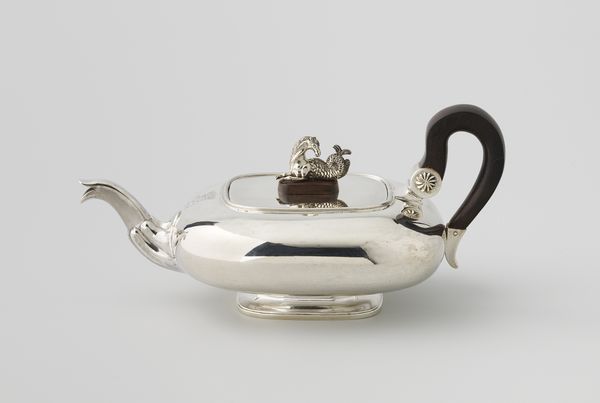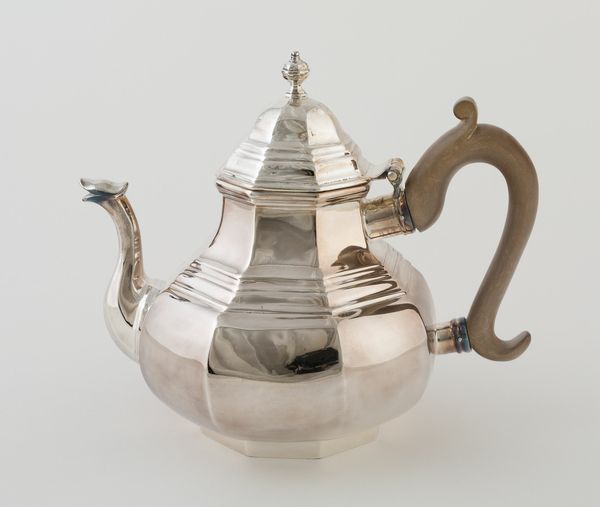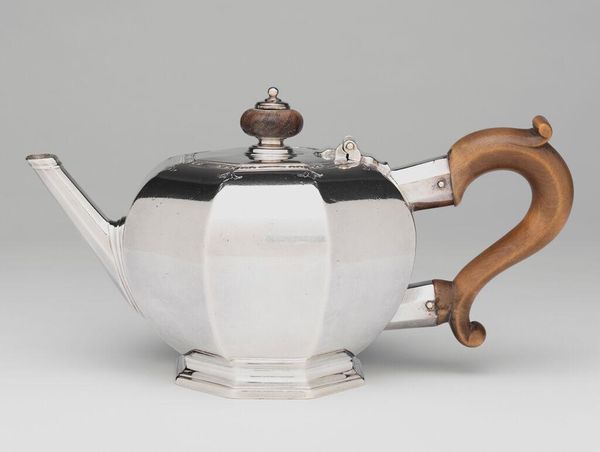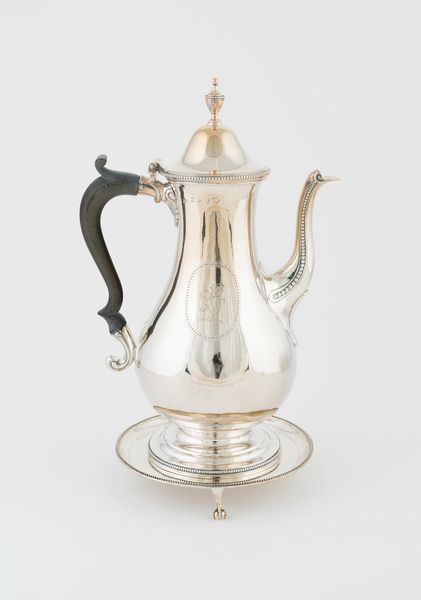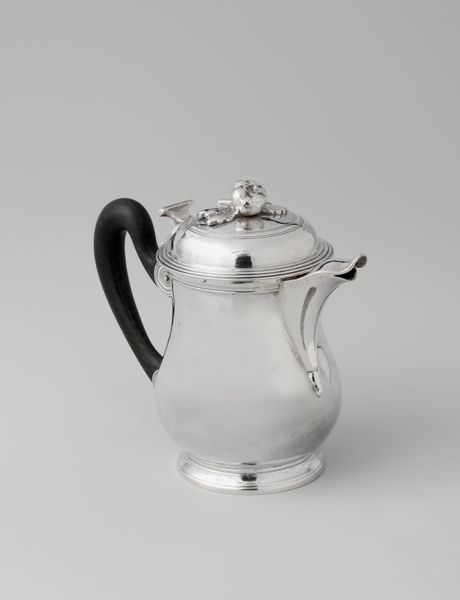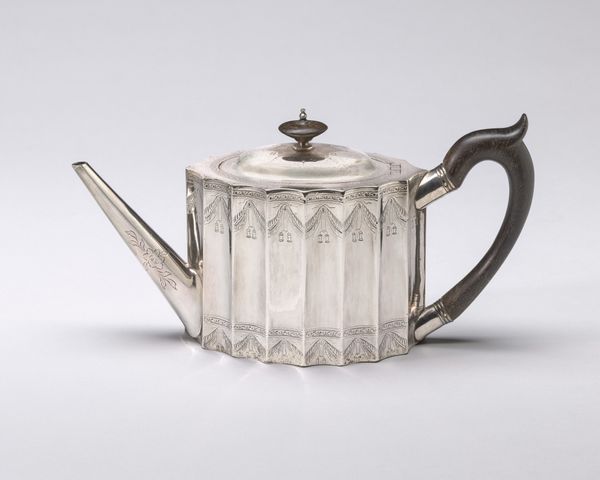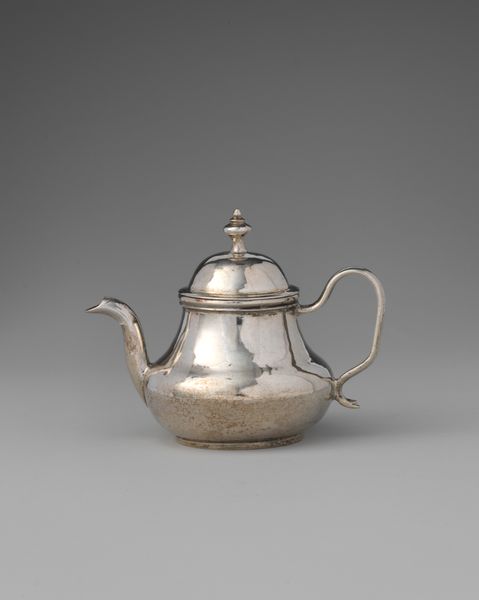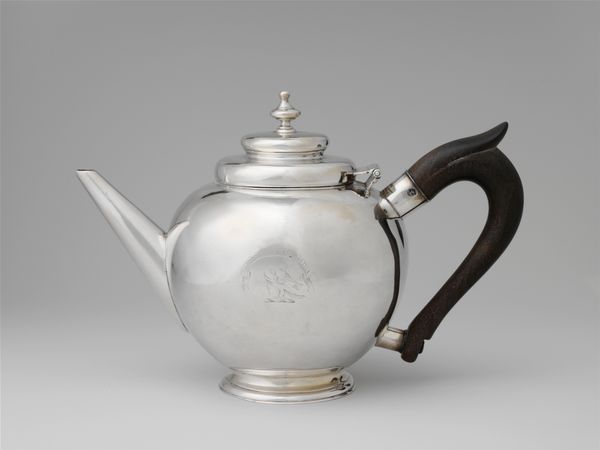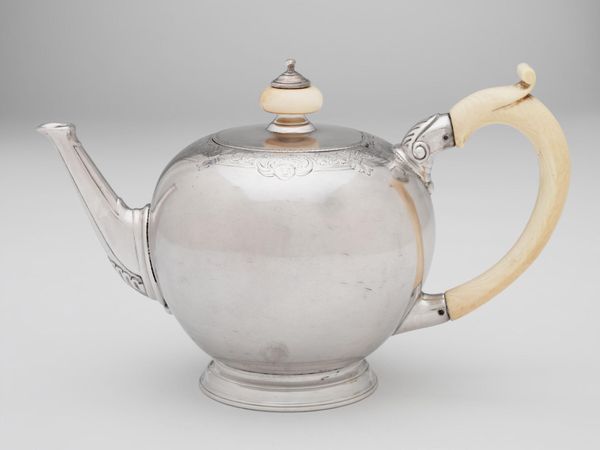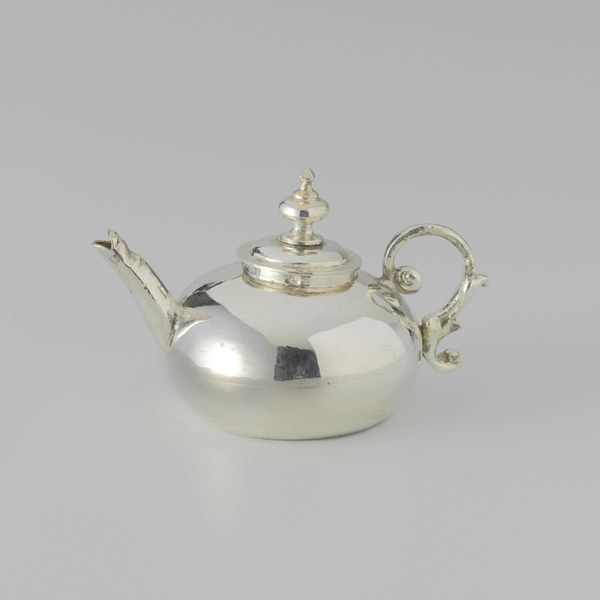
silver, metal
#
silver
#
metal
#
rococo
Dimensions: height 11.9 cm, width 16.8 cm, depth 8.8 cm, weight 306 cm
Copyright: Rijks Museum: Open Domain
Curator: Well, this object offers a fascinating glimpse into the Rococo period: it's a silver teapot made in 1761 by Valentijn Caspar Bömecke. Editor: My initial impression is that it's surprisingly angular! Not the rounded curves I typically associate with Rococo. There's almost a minimalist sensibility to its basic form, contrasting the very ornate spout and handle. Curator: That's a great observation. While it bears hallmarks of the Rococo style, we can analyze the context around how silver teapots reflected a burgeoning class structure. This style, despite being associated with nobility, seeped down into the growing middle classes' own aspirations. Tea drinking, originally an elite activity, becomes democratized to some extent through objects like these. Editor: I agree. Examining it from the perspective of cultural consumption and societal stratification is spot on. This silver teapot reflects the evolving status of women within those middle class structures. Tea drinking was often a highly feminized domestic space and this particular vessel plays into the gendering of rituals around femininity and propriety. The silver screams of an attempt to reflect luxury or at least project sophistication. The handle could have been so delicate. Yet the stark angular shape presents an internal challenge of identity; a strong female presence is still not to be shouted but understated with subtle lines, a careful turn. Curator: And note how the teapot would have been used. This wasn't just a utilitarian object; it would have been displayed, its reflective surface catching the light, projecting wealth and taste. Bömecke, as the artisan, contributed to this social performance through material choices and form. There's something subversive too, perhaps; this tension between a rising class emulating courtly ritual as a method to undermine the former social order. Editor: Yes, precisely! I'm also intrigued by the visual tension the spout creates with the wooden handle; those differing colors and lines emphasize the performative role of objects in creating identity narratives. What a potent object it is in all its seeming simplicity! Curator: Absolutely, viewing it through the lenses of gender, class, and the politics of display gives this small teapot remarkable depth. It showcases a specific era. I will look at Rococo designs quite differently after this discussion!
Comments
No comments
Be the first to comment and join the conversation on the ultimate creative platform.
